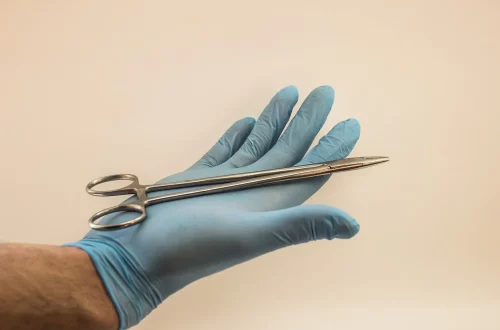
Benefits of Using an Ice Therapy Machine for Knee Recovery
Ice therapy has gained significant attention in recent years as a beneficial treatment for various injuries and ailments, particularly for those recovering from knee issues. The application of cold therapy is not just a fleeting trend; it is deeply rooted in the principles of sports medicine and physical rehabilitation. The use of ice in therapy helps to alleviate pain, reduce swelling, and promote the healing process. As athletes and non-athletes alike seek effective solutions for recovery, the ice therapy machine has emerged as a popular tool that offers convenience and efficiency.
This method involves the controlled application of cold, which can minimize tissue damage and enhance recovery time. Understanding the science behind ice therapy allows individuals to appreciate its value. Moreover, the accessibility of ice therapy machines makes it easier for anyone to incorporate this treatment into their recovery routines, whether at home or in a clinical setting. As people increasingly turn to innovative solutions for rehabilitation, the ice therapy machine stands out as a reliable option that can lead to improved outcomes for knee recovery.
How Ice Therapy Machines Work
Ice therapy machines operate on the fundamental principle of cryotherapy, which involves the application of cold to the body to achieve therapeutic benefits. These machines typically consist of a cooling unit that circulates cold water or ice around a specialized wrap or pad designed to fit the affected area, such as the knee. The process is straightforward: the machine cools the water, which is then circulated through the pad, maintaining a consistent temperature for optimal therapeutic effect.
The primary mechanism of ice therapy involves vasoconstriction, where blood vessels tighten in response to cold exposure. This reaction reduces blood flow to the area, thereby minimizing swelling and inflammation. Additionally, by lowering the temperature of the tissues, ice therapy helps to numb the pain, providing immediate relief for those suffering from acute injuries or chronic pain conditions.
Moreover, the use of an ice therapy machine allows for a more controlled and uniform application of cold compared to traditional ice packs. The machines can maintain a specific temperature range for extended periods, ensuring that the therapeutic effects are consistent throughout the treatment session. This method not only enhances comfort but also reduces the risk of ice burns or frostbite, which can occur with improper application of ice.
Furthermore, ice therapy machines often come equipped with timers and adjustable settings, allowing users to customize their treatment according to their specific needs. This level of personalization can significantly improve the effectiveness of the therapy, making it a valuable tool for individuals at various stages of recovery.
Benefits for Pain Relief and Swelling Reduction
One of the most significant advantages of using an ice therapy machine for knee recovery is its effectiveness in alleviating pain and reducing swelling. Many individuals experience discomfort and swelling following an injury or surgical procedure, and ice therapy serves as a non-invasive solution.
Cold therapy works by numbing the nerve endings in the affected area. This temporary loss of sensation can provide immediate relief from acute pain, making it an ideal treatment shortly after an injury occurs. Additionally, the reduction in swelling is crucial for enhancing mobility and overall function. With less inflammation, individuals can begin rehabilitation exercises sooner, which can lead to quicker recovery times.
Studies have shown that consistent use of ice therapy can lead to significant reductions in pain levels and swelling following knee surgeries, such as arthroscopy or total knee replacement. By integrating an ice therapy machine into their recovery regimen, patients can manage their symptoms more effectively, allowing them to focus on regaining strength and mobility.
Moreover, the psychological benefits of pain relief cannot be overlooked. When individuals experience less pain, their motivation to participate in rehabilitation activities increases, which can further enhance recovery outcomes. The combination of physical and emotional relief makes ice therapy a compelling option for those on the road to recovery.
Enhanced Recovery and Rehabilitation Outcomes
Incorporating an ice therapy machine into a rehabilitation program can lead to improved overall recovery outcomes. By effectively managing pain and swelling, patients are more likely to adhere to their prescribed rehabilitation exercises. This adherence is crucial, as physical therapy is often a key element in regaining strength and mobility after an injury or surgery.
The use of ice therapy can also facilitate a more active recovery process. With decreased pain and swelling, individuals can engage in gentle movements and stretching exercises that promote blood flow and flexibility. This early mobilization is essential for preventing stiffness and maintaining joint function, particularly in the knee, which is prone to complications if left immobile for extended periods.
Additionally, ice therapy machines allow for frequent and consistent treatment sessions. Unlike traditional ice packs, which may require frequent replacement or adjustments, ice therapy machines can provide continuous cold therapy for longer durations. This convenience makes it easier for patients to integrate ice therapy into their daily routines, ensuring they receive the maximum benefits.
Furthermore, many athletes utilize ice therapy machines as part of their post-exercise recovery protocols. The application of cold therapy after intense workouts can help prevent delayed onset muscle soreness (DOMS) and expedite recovery. This practice not only aids in physical healing but also enhances athletic performance by allowing athletes to train more consistently without prolonged downtime due to injury.
Convenience and Accessibility of Ice Therapy Machines
The convenience of ice therapy machines is a significant factor contributing to their popularity among individuals recovering from knee injuries. Traditional methods of applying ice can be cumbersome and time-consuming, often requiring multiple bags of ice or constant monitoring. In contrast, ice therapy machines streamline the process, offering hands-free operation and consistent temperature control.
Many models are designed for home use, making it easy for individuals to receive therapy without frequent trips to a clinic or physical therapist. This accessibility empowers patients to take charge of their recovery, allowing them to adhere to their treatment plans more effectively.
Additionally, the compact nature of many ice therapy machines means they can be stored easily and used whenever needed. Whether at home, in the office, or while traveling, users can maintain their recovery protocols without significant disruption to their daily lives.
Moreover, advancements in technology have led to the development of portable ice therapy units that can be used on-the-go. These devices provide the same benefits as larger machines but in a more compact form, making it easier for individuals to incorporate ice therapy into their busy lifestyles.
In conclusion, ice therapy machines represent a valuable tool for anyone recovering from knee issues. Their ability to alleviate pain, reduce swelling, and enhance overall recovery outcomes makes them an essential component of many rehabilitation programs. With the added benefits of convenience and accessibility, these machines empower individuals to manage their recovery effectively and return to their daily activities with confidence.
**Disclaimer:** This article is for informational purposes only and should not be considered medical advice. Always consult a healthcare professional for medical concerns or treatment options.




